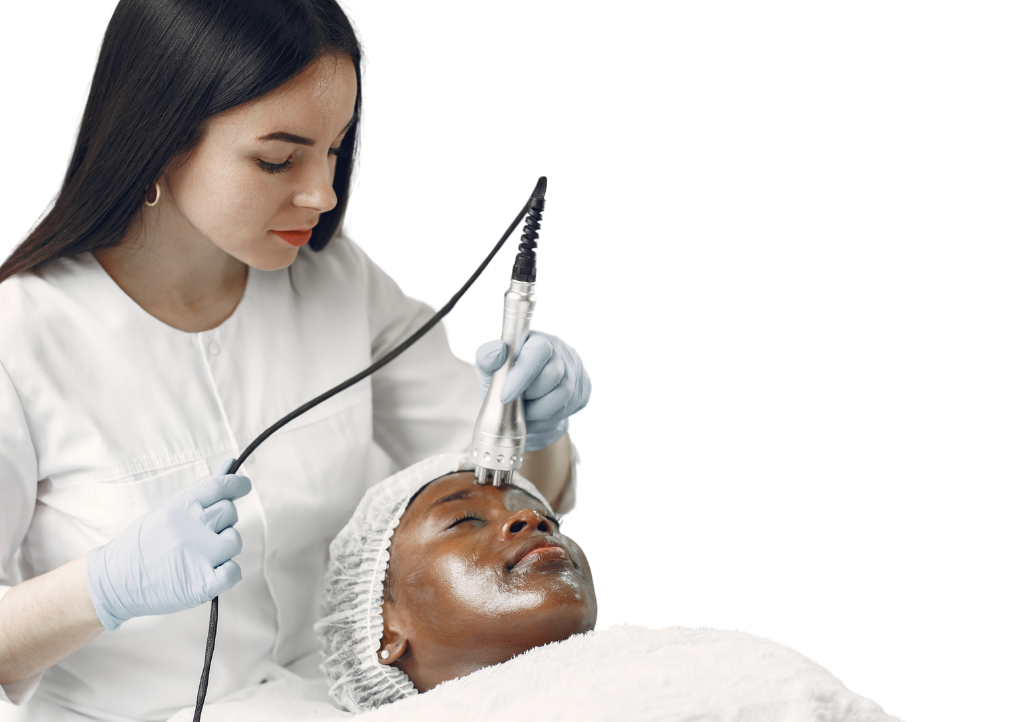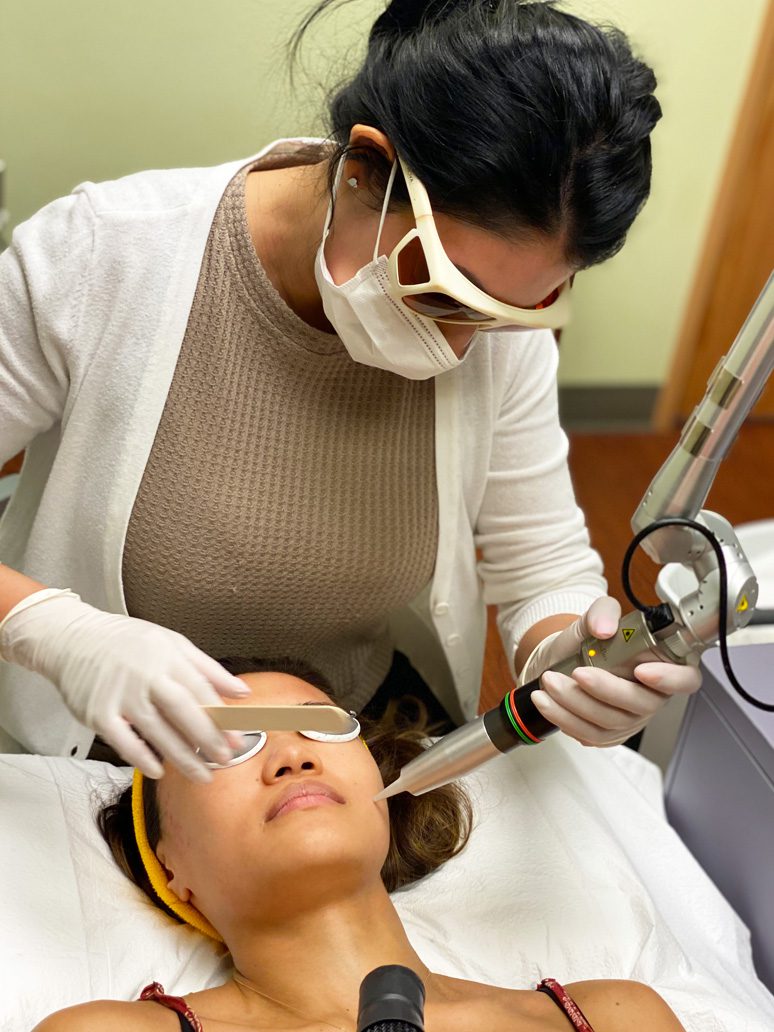The Function of a Skin Specialist in Diagnosing and Treating Different Skin Conditions
The role of a dermatologist extends far past basic skin care; it incorporates the intricate processes of detecting and treating a wide array of skin problems. Through their specialized training, dermatologists utilize innovative diagnostic strategies to identify problems such as psoriasis, eczema, and acne, tailoring treatment strategies to satisfy individual client requirements. Nonetheless, the complexity of skin disorders often needs a complex approach that consists of not only clinical treatments yet also patient education and preventative techniques. What effects does this comprehensive care have for client end results and general skin health and wellness?
Relevance of Dermatological Knowledge
The experience of skin specialists is vital in the diagnosis and monitoring of skin disorders, as they possess specialized understanding that extends beyond general clinical training. This advanced understanding is necessary for properly recognizing a vast array of skin problem, which often present with overlapping symptoms that can puzzle non-specialist specialists. Skin doctors are educated to set apart in between numerous skin problems, ensuring ideal treatment plans are applied swiftly.
In addition, the field of dermatology incorporates an one-of-a-kind mix of professional abilities and sophisticated modern technology. Skin doctors use sophisticated diagnostic tools, such as dermatoscopes and skin biopsies, to examine skin lesions and establish their nature. This technical proficiency enables for early detection of possibly severe conditions, consisting of skin cancers cells, which can considerably improve patient end results.

Typical Skin Disorders Diagnosed
Many skin disorders can offer with varying degrees of seriousness and intricacy, making skin-related proficiency crucial for exact medical diagnosis and management. Amongst one of the most prevalent problems are acne vulgaris, dermatitis, psoriasis, and dermatitis.
Acne vulgaris, identified by the presence of papules, comedones, and pustules, primarily influences teenagers yet can persist into the adult years. Eczema, or atopic dermatitis, is a persistent inflammatory problem that causes dry, scratchy, and swollen skin. Psoriasis is an autoimmune disorder that shows up as red, scaly plaques, mostly on extensor surfaces, and can dramatically influence the lifestyle.
Various other usual disorders include rosacea, which presents with facial flushing and noticeable blood vessels, and seborrheic dermatitis, typically leading to dandruff and oily spots on the scalp. Fungal infections, such as tinea pedis (professional athlete's foot) and tinea corporis (ringworm), are additionally often encountered.
These varied problems require a thorough understanding of pathophysiology, in addition to understanding of therapeutic options, to guide effective therapy approaches - Dermatologist Raleigh NC. Via accurate diagnosis, dermatologists can supply tailored monitoring strategies that deal with both the signs and underlying root causes of these common skin conditions
Analysis Strategies Made Use Of
Exactly how do dermatologists accurately detect different skin problems? Skin specialists employ a combination of medical analyses, diagnostic tools, and specialized methods to ensure exact identification More Help of skin disease. The first action generally involves a thorough medical history and physical exam. During this procedure, skin doctors examine the individual's symptoms, beginning, duration, and any kind of potential triggers.
Among the main analysis strategies is dermoscopy, which utilizes a portable tool to magnify skin sores, permitting thorough examination of frameworks not noticeable to the nude eye. Furthermore, skin biopsies are regularly executed, where a small sample of skin is eliminated for histopathological analysis. This method is very useful for identifying conditions such as melanoma and other skin cancers cells.
Patch screening is one more crucial approach utilized to recognize call dermatitis by exposing small amounts of potential irritants to the skin. Research laboratory tests, consisting of blood examinations and societies, may be performed to rule out systemic concerns or infections. Jointly, these diagnostic methods enable dermatologists to formulate a detailed understanding of skin disorders, leading to accurate diagnoses and notified individual monitoring.

Treatment Alternatives Available
A large selection of therapy choices is available for taking care of skin disorders, customized to the details problem and specific patient requirements. Skin specialists use both systemic and topical therapies, depending on the intensity and kind of skin problem. Topical therapies, such as corticosteroids, retinoids, and calcineurin inhibitors, are generally prescribed for conditions like dermatitis, psoriasis, and acne. These representatives target inflammation and advertise skin recovery.
For much more serious conditions, systemic treatments may be necessary. These consist of dental medications such as antibiotics for microbial infections and immunosuppressants for autoimmune disorders. Biologics, a more recent course of medications, have shown effectiveness in dealing with chronic inflammatory problems like psoriasis and atopic dermatitis.
In enhancement to pharmacologic interventions, dermatologists may advise step-by-step choices such as laser chemical, photo-therapy, or treatment peels (Dermatologist Raleigh NC). These procedures can attend to pigmentation site here issues, acne scarring, and various other skin irregularities efficiently
Moreover, way of living adjustments, consisting of proper skincare regimens and sun protection, play an essential role in the total administration of skin disorders. By combining these therapy modalities, skin doctors aim to boost client end results and boost lifestyle for those impacted by skin disease.
Individual Education and Assistance
Empowerment through expertise is important in the administration of skin disorders, as patient education and learning and support substantially influence treatment end results. Dermatologists play a pivotal function in supplying individuals with detailed details regarding their problems, therapy alternatives, and self-care methods. Effective communication promotes a collaborative atmosphere where people can actively join their very own treatment.

Assistance extends beyond education; it encompasses emotional peace of mind and ongoing motivation. Skin doctors need to create a risk-free area for individuals to share their problems and ask questions. Resources such as informational handouts, web sites, and support teams can further empower patients, enabling them to get in touch with others dealing with similar difficulties.
Eventually, an educated person is most likely to participate in their therapy trip, causing better adherence, fulfillment, and enhanced health end results. The dermatologist's role in person education and support is fundamental to maximizing the administration of skin problems.
Conclusion
In conclusion, dermatologists play an important role in the reliable medical diagnosis and treatment of a wide variety of skin conditions. Their specific experience, combined with innovative diagnostic methods and customized therapy strategies, guarantees detailed look after individuals. Furthermore, the emphasis on patient education fosters positive monitoring of skin wellness, empowering individuals to take enlightened actions concerning their skin care regimens. The contributions of dermatologists substantially improve the lifestyle for those impacted by skin problem.
The duty of a skin specialist expands far beyond fundamental skin treatment; it encompasses the elaborate procedures of detecting and treating a broad variety of skin problems. Dermatologists use innovative analysis tools, such as dermatoscopes and skin biopsies, to assess skin lesions and determine their nature. Ultimately, the specialized training and experience of skin specialists are essential in providing comprehensive care for Discover More Here clients with skin conditions.
In addition, skin biopsies are often carried out, in which a tiny example of skin is gotten rid of for histopathological analysis. Collectively, these analysis techniques allow dermatologists to formulate an extensive understanding of skin conditions, leading to precise diagnoses and informed client management.